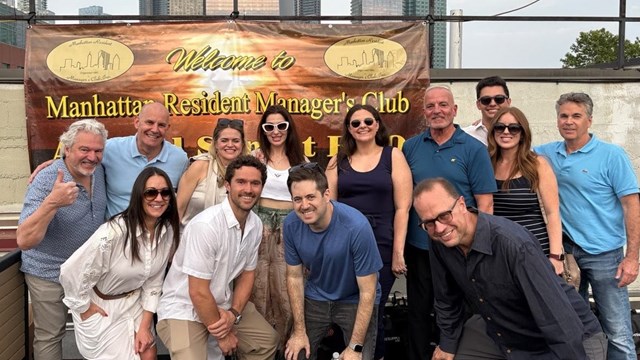
When the Dutch settled in what was then called “New Amsterdam,” a man named Johann Lampo patrolled the trails and paths of the area, keeping the peace and watching for fires. Little did Lampo know that he was the first in a long, honored line of law enforcement officers of New York City.
The NYPD currently has 36,400 male and female officers on the force, according to Walter Burnes, an NYPD detective who works in the offices of Paul J. Browne, the deputy commissioner of public information for the NYPD. “In addition, there are approximately 1,100-2,500 trainees, depending on the needs of the police department at any given time,” says Burnes. Those numbers are significant, considering that Johann Lampo was able to police the entire colony himself over four hundred years ago. Technological advances, population booms and the nature of crime have all changed the face of the NYPD over the years, but the goals of the organization have remained consistent.
Rattle Watches and Leatherheads
Even though Lampo was recognized as a patrolman, New York wouldn’t have an official police department until 1845. Between Lampo and the start of the NYPD we recognize today, a corps of men called the “Rattle Watch” was in charge of keeping the peace. From 1609 to 1664, eight Dutch colonists carried lanterns and wooden rattles as they watched over the streets of their colony. The rattles were pre-whistle noisemakers that would alert members of the community to crime, fires or other threatening situations. The lanterns the men carried were made of green glass—this helped identify them to citizens. The green light became synonymous with aide and assistance and to this day, green lights are lit outside the entrances to Police Precincts in homage to the men of the Rattle Watch and to reassure citizens that the police are on duty. It would be over 150 years before the NYPD was officially created, but many of the traditions started by the Rattle Watch remain today.
After the English wrested control of New Amsterdam from the Dutch and renamed it New York, law enforcement was still carried out in much the same way as it was done under the Rattle Watch. As the population of the city exploded, however, it became clear that the homespun model of law enforcement practiced in the early colonial days wasn’t going to cut it. The combination of crushing poverty, massive immigration, and desperate crowding made Manhattan a hotbed of crime and vice. It was said that in the notorious Five Points neighborhood in what is now Manhattan’s Lower East Side, there was a murder a night—along with a symphony of prostitution, drunkenness, pick-pocketing, and riots.
In the early 1800s, more formally-appointed constables took over from the more informal watch groups. Posted in wooden sentry boxes throughout the city, the new constables were called “leatherheads” because of their distinctive leather helmets, which protected them from the garbage and debris often flung out of upper-story windows. Within a couple of decades, however, the leatherheads weren’t viewed much more favorably than the miscreants they were supposed to be policing. Corruption, bribery, and constant immersion in the underbelly of New York’s slums and ghettoes had turned the constable watch into “a collection of idlers and gossipers,” in the words of one critic at the time.
NYPD v.1
According to historian William Andrews, the corruption and incompetence among the city’s leatherheads prompted the dissolution of their ranks and the formation of a more organized police force with uniforms, officers, and a crystal-clear chain of command. While everyone agreed that crime was out of control in many parts of the city, there were those who opposed the idea of a paramilitary model of law enforcement on the grounds that a “standing army” would pose a threat to liberty and freedom in the city.
The threat to life and limb in the Five Points and elsewhere eventually proved more compelling than threat to personal liberties, however, and in the mid-1800s, Mayors Robert Morris and William Havemeyer succeeded in passing a bill forming the New York Municipal Police.
“In 1845, the police department was formed and the city authorized the force to hire 800 men,” says Michael Cronin, executive director of the NYPD Museum, located at 100 Old Slip in Lower Manhattan. Cronin served as a detective on the NYPD force for over 20 years before working as a curator and historian for the museum. The executive director for the past five years, Cronin knows the history of the force, inside and out.
“At that time, there was a famine in Ireland and Irish immigrants were pouring into the city. Over 700 Irish immigrants were hired as policemen.” Cronin says that the mayor and governor’s plan for a “London-style” police force based on the European model of policing didn’t sit well with the Irish immigrants, who were none too pleased with England at the time. When it came time for the immigrants to put on the uniforms, they wouldn’t do it.”
But the new conscripts had to identify themselves somehow—anti-English sentiment notwithstanding. Cronin says the officials and the men eventually compromised: police officers could wear their street clothes when they were working, but in order to make clear that they were a part of the police force, they wore a special copper lapel pin. This “badge” was fashioned in the shape of an eight-pointed star to represent the original eight men who worked the first Rattle Watch, and it’s been suggested that modern nickname “cop” or “copper” is actually a reference to the original badges officers wore more than 200 years ago.
The Politics of Policing
According to Andrews, ethnic animosity wasn’t the only force bringing pressure to bear on the nascent department. The NYPD was also caught in the teeth of city politics and political patronage from the very start. City Hall politicians and party bosses appointed and deposed police officers at their pleasure, and the police supervised elections—a situation that led to some obvious conflicts of interest.
According to Andrews, “Controlling the police force was seen as a key to political power by both the Tammany Democrats and their Whig rivals. Matters came to a head with the election of Democrat Fernando Wood and a move by the Whigs, who controlled the state government, to wrest police power from the mayor. In 1857, the state legislature created the Metropolitan Police for the City of New York, the City of Brooklyn, and Westchester County, effectively abolishing New York’s Municipal Police.”
That didn’t solve the problem, however. The Municipal Police continued to patrol, even after the Metropolitan Police officers arrived on the scene. Turf battles and rivalries inevitably erupted, and much drama ensued as Municipal officers were wooed (and threatened) by the Metropolitan camp, and vice versa.
Eventually, after a good decade of internecine conflict, the rift between the two police forces culminated in the Metropolitans bum-rushing City Hall and attempting to arrest then-Mayor Wood. The Municipals tried to defend their sponsor, but eventually the state prevailed and police power didn’t revert to local governance until 1870—when, as Cronin tells it, “the biggest crook in New York City saved the NYPD.”
Expanding the Force
That crook was the notorious Boss Tweed, a monumentally unscrupulous politician who people either fiercely adored or despised, and he had the city charter changed in 1870 to give control of the force back to the force itself. The NYPD went back to working in association with the mayor, rather than for state officials—and for Boss Tweed and Tammany Hall, of course.
Tammany’s continuing post-Tweed corruption and cronyism had a major adversary however, in one Theodore Roosevelt, future President of the United States, who served as police commissioner in 1895 and brought a zealous commitment to reform to the office. According to Andrews, Roosevelt banished political appointments to the force, established disciplinary rules, created a squad of bike cops, encouraged good marksmanship and physical fitness among officers, and awarded officers medals for meritorious service. It was Roosevelt who elevated police work to “an ethical and honorable profession,” says Andrews.
Roosevelt also opened the ranks to some (but not all) ethnic minorities and hired the first women to work for the force—though not as officers, per se. Under pressure from reformers, “Police Matrons” were hired to handle and transport female arrestees and prisoners. The police matrons were the first women to be hired by the police department, and in 1911, Samuel J. Battle was the first African-American police officer to join the force.
Public Perceptions
Cronin says that up until the late 1950’s and early 1960’s, public opinion of the NYPD was generally positive. But as the face of the country changed, the way people saw the police changed, too.
“The influence of drugs came on in a big way and crime itself changed,” he says. “The economy was changing a lot at the time, and areas of the city were changing, too—there was the whole ‘anti-establishment’ mentality and people started to see cops as the enemy.”
Cronin says that while technology has largely improved the way the police fight crime, it has altered the public perception of the NYPD, too. The introduction of the automobile had a significant impact on the way cops and citizens interacted “The NYPD went from strictly walking their beats and using the foot-post system to utilizing cars. It’s faster and safer to drive, but because of that, there was less interaction with the community. The telephone changed everything, too—you used to lean out your window and yell, ‘Help! Police!’ when you needed someone and a guy would come running. Once the telephone came on the scene, that changed.”
In addition to the decrease in the immediate, face-to-face connection, tales of police corruption and dirty cops were snatched up greedily by the press and the public in the 1970’s. Figures like Frank Serpico, a police detective who went public to expose corruption within the department, were popular news stories and finding fault with government officials from former President Nixon to neighborhood police officers became something of a national pastime.
Hard Lessons—and Progress
Cronin says that it wasn’t until the waning days of the 20th century that the view of the NYPD began to turn around. While several controversial instances of alleged police brutality were reported in the 1990’s, the general attitude of the public did begin to appear positive. There are many reasons for the shift, including a decrease in violent crime, increased community outreach programs, technological advances and, for better or worse, the heroism displayed by the NYPD on September 11th.
In fact, all of the events that have helped shape the current public opinion of the NYPD are events that have strengthened the force itself. The FBI reported in December of 2003 that its current crime figures show that New York City remains one of the “safest large cities in the United States.” Of the nine U.S. cities with populations over one million, the city ranks lowest in crime and is currently enjoying the lowest crime rate in its history since 1968.
Why the drop in crime? Burnes says that one of the reasons for the decrease in criminal activity is the increase in high-tech tools used by the force today. A lot has changed from the times of rattles and green lanterns. In 1994, the introduction of COMSTAT helped the NYPD become more efficient and focused than they had ever been before.
“COMSTAT stands for ‘computerized crime statistics,’” Burnes says. “The police department used to do end-of-the month reports, just like any other business. You’d write the report, give it to your boss by the 7th of the month. He’s look at it by the 15th. By that time, it was totally out of date—the crimes that were reported were a month old already. With COMSTAT, we can mobilize forces immediately—and that has changed the face of crime fighting.”
Cronin echoes this sentiment, and adds, “[Before COMSTAT] we were using push pins and maps to track crime. Now we’ve got what we call the ‘Real Time Crime Center.’ Let’s say someone is getting robbed with a handgun. Since all the information is in the computer now, you can find all the complaints and patterns about the offender and even the gun instantaneously,” he says. “When it comes to fighting crime, time is your worst enemy—the new technology speeds everything up.”
Cronin adds that not only is the new technology utilized by the force helping fight crime in New York City, it’s putting the NYPD in the position of being a leader for other police departments across the U.S. and around the world. “We’re the largest police department in the country,” says Cronin. “If we do something that works, it’s adapted by other forces.”
Burnes adds that the scope of the NYPD isn’t just worldwide in the use of computers—since September 11th, the force has deployed detectives to places such as England and Pakistan to investigate possible terrorist activity and criminals who might have plans to enter the U.S. through New York.
“Since 9/11, were absolutely more prepared,” says Burnes. “We learned big lessons and lots of little ones. We revamped our Intelligence Department. Commissioner [Raymond] Kelly formed the Counter-Terrorism Department. The detectives overseas are helping us stay at the forefront.”
According to Burnes, New York City is “the capital of the world” and because of that, no police department is doing more to keep its citizens safe.
Fidelis ad Mortem
Since the Dutch settled here, New York has grown into a city of over eight million people. The numbers continue to grow, and the NYPD has continued to grow right along with its city, through the good, bad and ugly. Both Burnes and Cronin agree that while the NYPD has changed dramatically over the years to respond to the various needs of the public, the goals of the organization have remained the same—to serve and protect the citizens of New York at all costs. In fact, the official motto of the NYPD is the Latin phrase, “Fidelis ad Mortem,” or, “Faithful Unto Death.” According to Burnes, “We’ll do whatever it takes to keep the city safe.” Johann Lampo most likely felt the same way.
Mary Fons is a freelance writer and frequent contributor to The Cooperator.






Comments
Leave a Comment